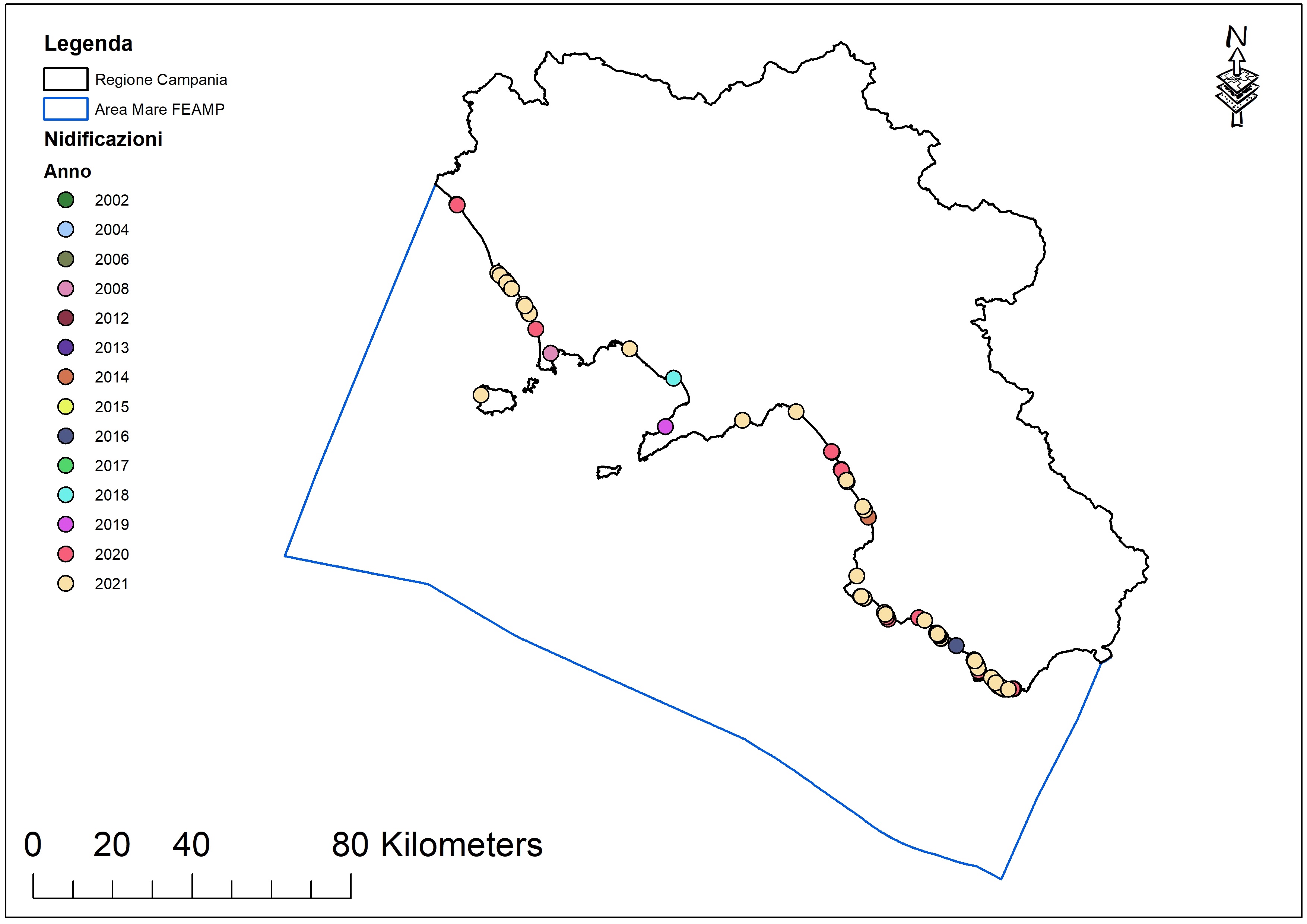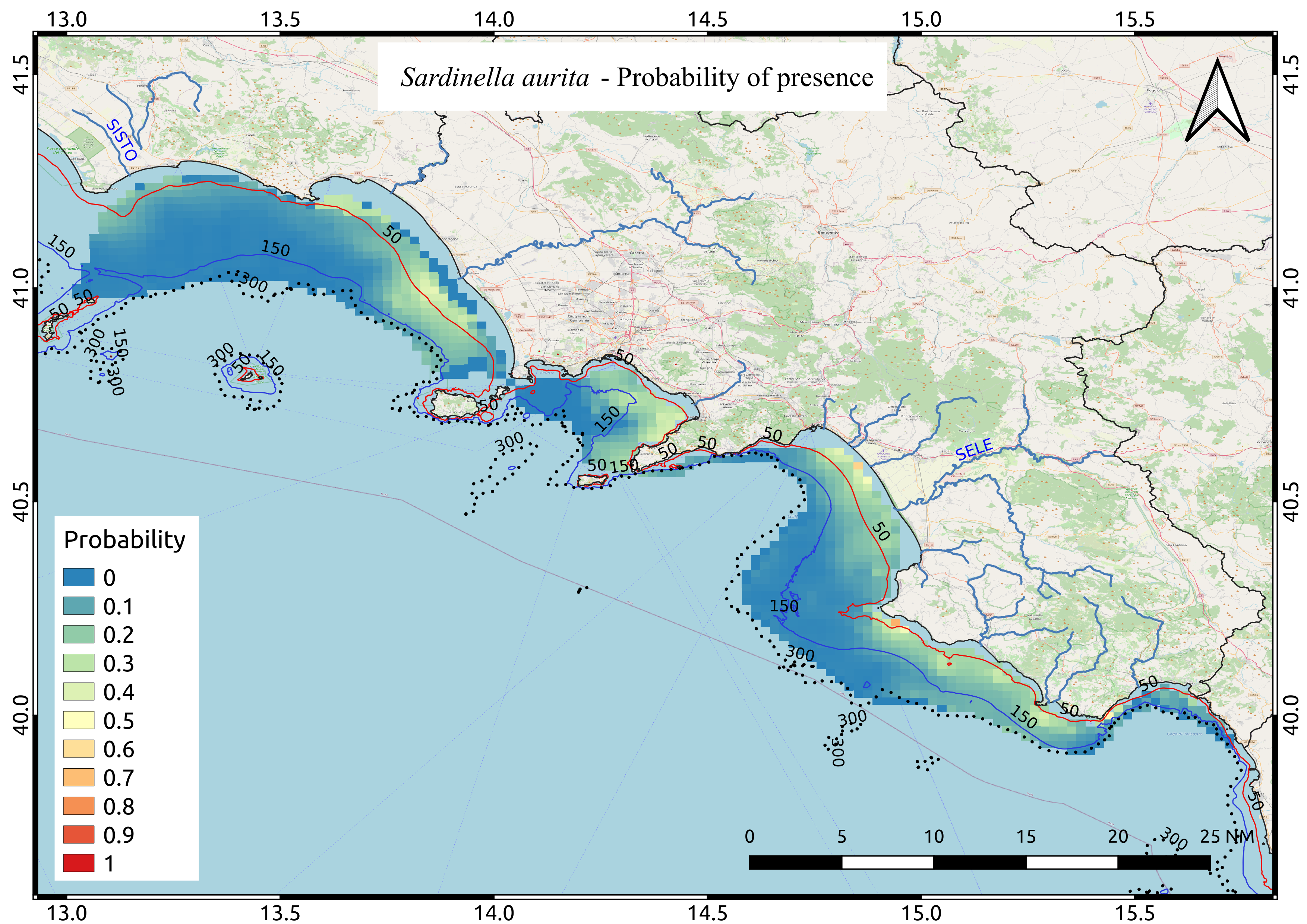biota
Type of resources
Available actions
Topics
INSPIRE themes
Keywords
Contact for the resource
Provided by
Years
Formats
Representation types
Update frequencies
status
-

The superficial sea temperature (SST) map package was built with daily-mean data at high spatial resolution (0.01 degree) remotely collected between 2008 and 2020. The maps were also built over the four quarters of the time period. These layers are provided with the suffixes Q1 to Q4. The SST trend maps show the increasing or decreasing trend of SST over the selected time period.
-

Map showing the distribution of loggerhead turtle nests (Caretta caretta) in the Campania Region between 2002 and 2021.
-
List of the main cations and anions found in hydrothermal fluids of the sampled sites.
-

Adult females of Temora stylifera and Acartia clausi, sorted from the mesozooplankton sample, incubated for 24h in natural surface seawater collected at the same sampling station, to assess fecal pellet production (pellets/female/day) and egg production (eggs/female/day). After 48h, calculated the hatching success of these eggs (% hatching success). Individual parameters converted into population parameters in situ, taking into account female abundance at the same station and defined as egg/m3 and nauplii/m3. The file ‘produzione copepodi_tutti’, contains mean and SD of the above parameters, for each of the sampled copepod species.
-

The Underwater Coastal Environment Monitoring Protocol is a Citizen Science initiative aimed to assess the ecological status of the Mediterranean marine coastal habitats. SCUBA divers and snorkelers contribute with their surveys. The web service provides information about the surveys, the environments, the habitats and, the species,
-
Pictures of photo quadrats at three different depth of selected sampling sites within MPA Castellabate
-

Average probability map of Spicara spp computed by means of Indicator kriging based on 9 years of acoustic surveys carried out in the summer period
-

Average probability map of Sardinella aurita computed by means of Indicator kriging based on 9 years of acoustic surveys carried out in the summer period.
-

Potential distribution of Hippocampus hippocampus in the FEAMP area. We used an ecological modelling approach by using Biomod2 package in R. Spatial resolution 1 km2. For further details see: https://onlinelibrary.wiley.com/doi/full/10.1111/ddi.12741
-
Pictures of photo quadrats at three different depth of selected sampling sites within MPA Regno di Nettuno
 FEAMP GeoNetwork catalogue
FEAMP GeoNetwork catalogue